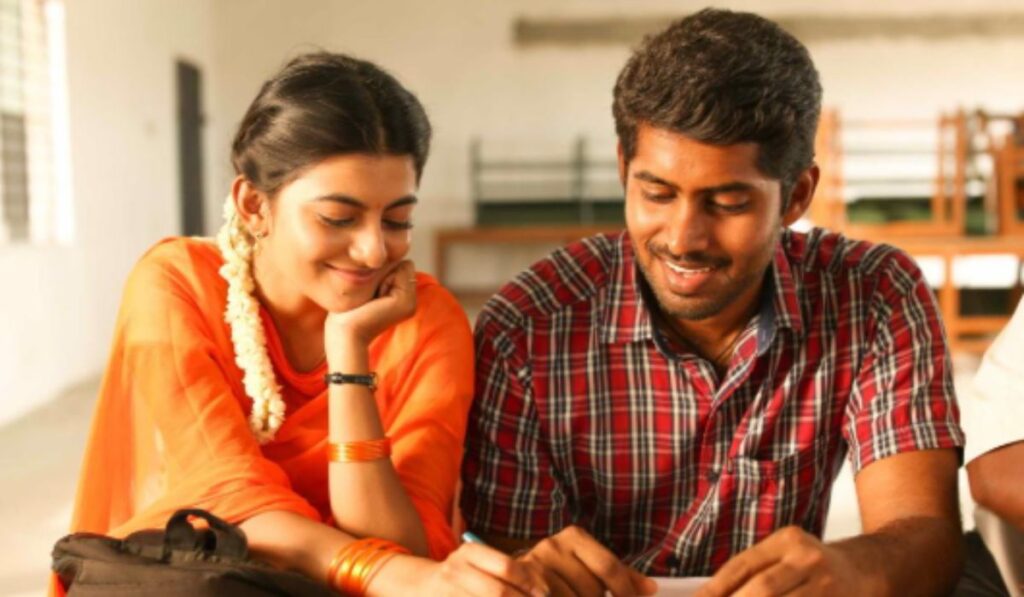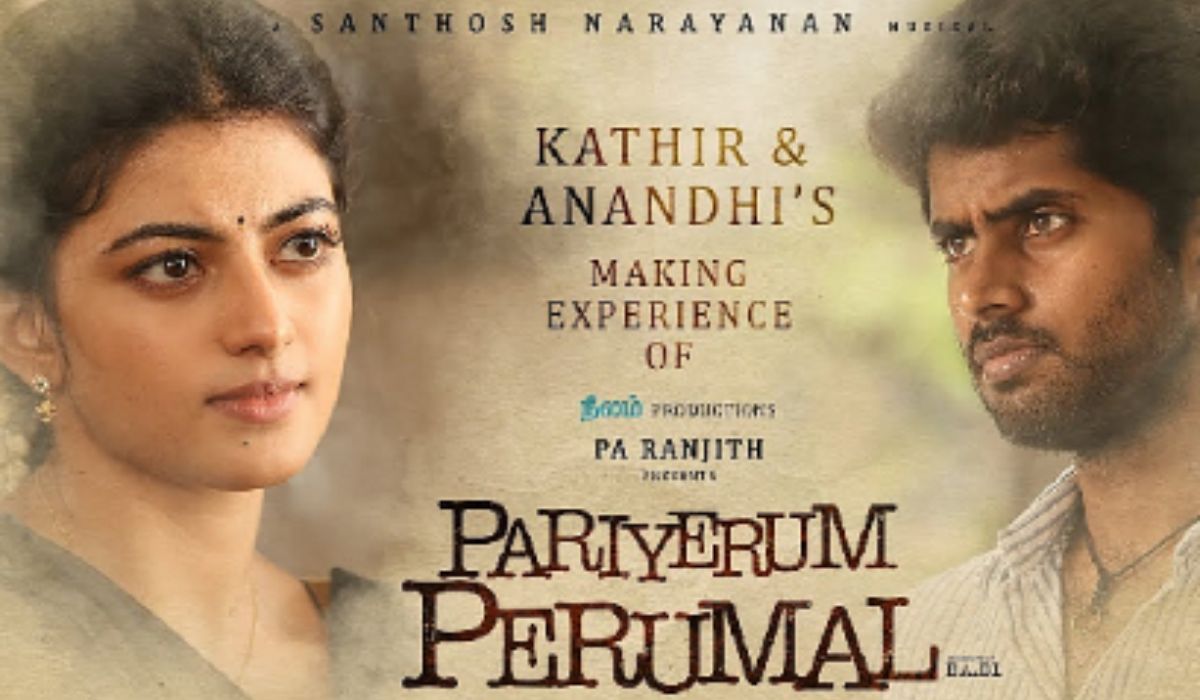Indian cinema has often been a medium for storytelling that reflects society’s struggles, challenges, and evolution. In 2018, director Mari Selvaraj made a remarkable entry into Tamil cinema with Pariyerum Perumal, a film that not only told a compelling story but also shed light on deep-rooted caste discrimination in India. Backed by acclaimed director Pa. Ranjith and featuring a strong performance by Kathir in the lead role, Pariyerum Perumal is a film that goes beyond entertainment—it’s a social statement.

Plot Overview
The film follows the journey of Pariyan (Kathir), a young man from an oppressed caste who aspires to become a lawyer. He enrolls in law school in Tirunelveli, filled with dreams and hope. However, his life takes a dark turn when he befriends Jothi Mahalakshmi (Anandhi), a girl from an upper-caste family. Their innocent friendship is misinterpreted, leading to caste-based humiliation, discrimination, and violence.
Throughout the film, Pariyan faces brutal oppression from the privileged caste, which tries to put him in his place through threats, violence, and systematic exclusion. Yet, despite the struggles, Pariyan refuses to be broken. His resilience, supported by the lessons he learns from his father and mentor, becomes the soul of the narrative.
Themes Explored in the Film
1. Caste Discrimination and Social Injustice
At its core, Pariyerum Perumal is a hard-hitting take on caste-based discrimination in India. It does not shy away from showing the harsh realities faced by marginalized communities. The film portrays how caste oppression is not just physical but deeply embedded in education, social interactions, and even friendships. Pariyan’s experiences highlight the everyday struggles of individuals who must constantly prove their worth in a society that devalues them based on birth.
2. Education as a Tool for Change
Pariyan’s journey is driven by his pursuit of education, which he believes will be his weapon against oppression. However, the film realistically portrays the struggles of students from oppressed backgrounds who face not just academic challenges but also systemic discrimination that makes their journey more difficult. The law college setting serves as a microcosm of the larger society, showing how caste discrimination exists even in supposedly progressive spaces.
3. The Power of Silent Resistance
Unlike traditional commercial films where the hero fights back physically, Pariyerum Perumal shows a protagonist who endures but does not retaliate with violence. Instead, his resilience, patience, and quiet resistance become his weapons. His character is an example of how the oppressed often have no choice but to endure and fight through legal and systemic means rather than direct confrontation.
4. The Role of Women in Caste Dynamics
The character of Jothi Mahalakshmi is significant in understanding how caste operates in relationships. Despite her good intentions and genuine friendship with Pariyan, she remains unaware of the privilege her caste affords her. The film subtly shows how upper-caste individuals, even the well-meaning ones, rarely experience the struggles faced by marginalized communities.
Additionally, the film features a terrifying antagonist, a caste-supremacist hitman, whose wife’s silent agony speaks volumes about the oppression within caste hierarchies. This nuanced portrayal shows that caste discrimination affects people in different ways, including women trapped within oppressive family structures.

The Impact of Music and Visual Storytelling
Santhosh Narayanan music is a powerful element in the film, blending folk and contemporary sounds to evoke emotions. The song Karuppi, which serves as both a metaphor and a haunting theme throughout the movie, reflects the deep sorrow and injustices Pariyan faces. The visuals, mostly raw and realistic, immerse the audience in the harsh realities of rural Tamil Nadu, making the film an emotional experience rather than just a narrative.
Why Pariyerum Perumal Stands Out
1. Realistic Storytelling Without Melodrama
Many films that address social issues often resort to over-dramatization or exaggerated heroism. Pariyerum Perumal takes a different approach. It tells the story with raw realism, ensuring that every scene feels authentic rather than scripted for dramatic effect. This makes the emotional weight of the film even more powerful.
2. A Bold Directorial Debut
Mari Selvaraj’s direction is confident and unapologetic. He does not dilute the harsh realities of caste discrimination to make the film more “acceptable” for mainstream audiences. Instead, he presents them as they are—unfiltered and thought-provoking. His storytelling ensures that the message of the film lingers long after the credits roll.
3. A Reflection of Society
The film does not provide easy answers or a fairy-tale ending. Instead, it leaves the audience with questions about the world we live in. The struggle of Pariyan is not just his—it is the struggle of countless individuals who fight caste oppression daily. Pariyerum Perumal holds up a mirror to society and forces viewers to acknowledge the discrimination that still exists.
Conclusion
Pariyerum Perumal is more than just a film; it is a movement. It challenges audiences to think beyond the screen, to question societal norms, and to acknowledge the injustices that persist. With a strong narrative, compelling performances, and an unflinching portrayal of caste discrimination, the film remains one of the most important works of contemporary Tamil cinema.










